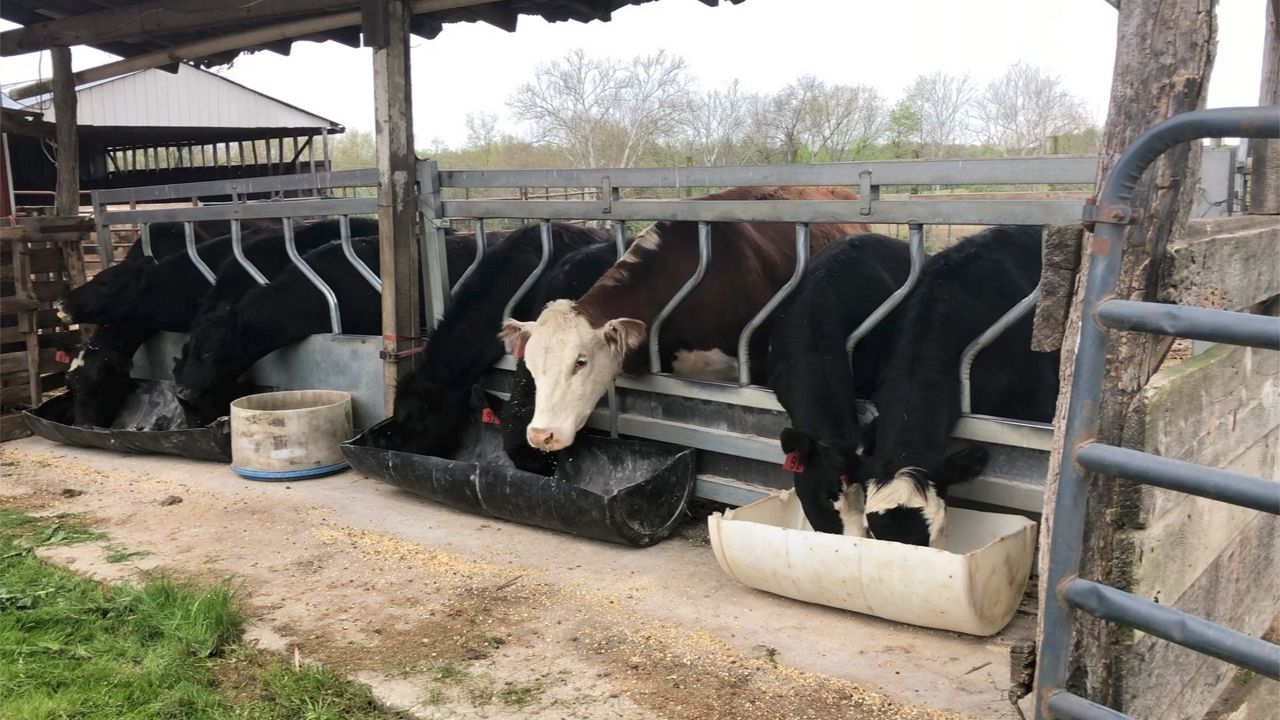LEXINGTON, Ky. – Farm profits in the United States are on track for one of the best years in a half-century – even adjusted for inflation – as government aid hit an all-time high during the ongoing COVID-19 pandemic.
What You Need To Know
- Billions in federal aid given to farmers
- Experts fear long-term effects could drive some farms into bankruptcy
- Small, local farms did not reap benefits
- Packers and processors benefit most, expert says
While net farm income this year will jump 43% from $84 billion to $119.6 billion, the highest inflation-adjusted level since 2013, according to the USDA, the surge occurred as the virus pandemic roiled the food-supply chain in the spring, driving grain prices down and meat costs higher. Small, local farms, however, have not experienced such a banner year and industry experts predict the influx of government money will have a lasting negative effect.
Harwood Schaffer and Darryll Ray at the University of Tennesse wrote recently the increase in profits did not come from the market itself, but payments made through pandemic-related programs such as the Coronavirus Food Assistance (CFAP), Paycheck Protection (PPP), and Market Facilitation programs.
“In this context, what is important is the near certainty that ad-hoc and disaster-assistance payments of this magnitude will not continue very far into the future,” Schaffer and Ray wrote in their recent “Policy Pennings” column. “It is also important to note that despite these large payments, 2020 farm debt increased by $16.6 billion between 2019 and 2020. This represents the continued increase in farm debt totaling $119.8 billion since 2013 and is relatively unrelated to the coronavirus.”
Also, net cash farm income is forecast to reach $134.1 billion this year. The difference between the two is net farm income is a broad measure of profits, while net cash farm income encompasses cash receipts from farming as well as farm-related income, including government payments, minus cash expenses, according to the December 2020 Farm Income Forecast.
With the expected increase because of supplemental and ad-hoc disaster assistance for COVID-19 relief, total animal product receipts are expected to decrease by $9.7 billion with declines in receipts for broilers, cattle, and hogs.
Jim Akers, chief operations officers of the Bluegrass Stockyards in Lexington, said the real financial windfall has been with retail and distribution because cattle prices have not been good. “The small farms have not reaped the benefits packers and processes have,” Akers said. “They have made a fortune, especially in the depths of COVID back in the spring and summer. Packers have a lack of competition with just four major operations in the country. The CFAP program gave direct payments to farmers because of the huge drop in cattle prices. Grain higher than it’s been in several years to the point where farmers could make a little money on it. Few farmers sell beef directly, and although there was more of a demand for the product, those farmers did not reap those financial benefits. It looks to be a better year coming up.”
Kentucky Commissioner of Agriculture Ryan Quarles said athough 2020 was complicated by the coronavirus pandemic, Kentucky farmers in most cases had a decent weather and crop year.
“Losses in market income were bolstered by swift action from the CARES act, which created the Coronavirus Food Assistance Program that helped farmers," Quarles said. "There was positive news on the international trade front as well. With the new USMCA now in effect, we can expect steady market relationships between the United States, Mexico, and Canada. Looking ahead for 2021, there’s some optimism out there for producers in hopes that the renewed focus on local agriculture will remain strong going forward.”



